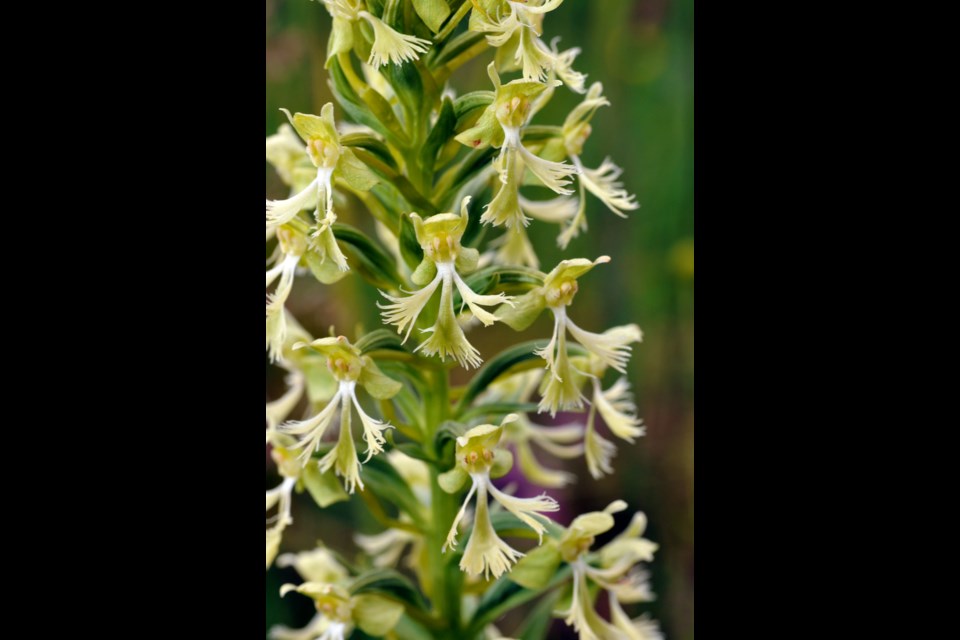Orchids are a fussy bunch of plants. They grow only if the soil pH is just right, if the moisture is just right, if the amount of sunlight is just right, reproduce only if the right kind of pollinators are in the neighbourhood. There is no wonder as to why botanists get a little excited when they encounter a real, live orchid in the wild.
Such was my state of euphoria whilst assisting staff from the Nature Conservancy of Canada on a project out in the ‘big sky’ country of the Carden Plain. Although we were officially scouting for the invasive dog-strangling vine, there was keen interest to learn about all the other botanical gems that grow on a limestone alvar.
As we tested each other on who could remember the recently learned names of harebell, Deptford pink, tall cinquefoil, long-leaved bluets and scarlet cup, I suddenly started into my happy dance. (Every botanist has a ‘happy dance’ although most, like myself, can conceal it fairly well.) However, my windmilling arms inviting all to come closer did pique their interest.
“Orchid!”
Growing in a scattered clump were seven gloriously bloomed, ragged-fringed orchids. This species is not one of those garishly coloured “look at me” orchids. No, this one blends in with its surroundings quite well. The blossoms are a pale yellowish green with white highlights. The real attraction is the form and structure of the individual flower.
The petals on an orchid tend to grow upside down as the whole bloom twists around upon opening, and what should be a large sheltering petal positioned above is now a large ‘lip’ on the bottom side. Sometimes this lip is a pouch, as found in the lady’s-slipper group, but this one has a torn-edges look that makes it one of the fringed orchids.
In our area, if you work hard and are somewhat lucky, can be found white fringed orchid, purple fringed orchid and prairie fringed orchid. All like a damp substrate with a good amount of available sunshine. The pockets of soil on the alvar provided just enough moisture to allow these magnificent plants to grow.
These orchids attract the required pollinators not so much by way of showy petals that scream “eat here” but rather by the gentle release of a scent that attracts the winged vectors of pollen transfer. Moths mainly, including the rather unique hummingbird clear-winged moth (another alvar inhabitant). Oh, and male mosquitoes.
There is a spike or raceme of blossoms (sometimes up to 60 per plant) that open first at the bottom and then go up the spike a day at a time. As the lower blooms are a tad more mature, the moths go there first in their search for nectar.
The pollen sacs stick to the tongue and face of the moth and are carried upward to the next flower. Of course, not every moth is capable of this task — just the ones with the correct shaped proboscis (face) to fit within the delicate folds of the orchid petals.
One of the reasons I was so excited to find these ragged fringed orchids is they do not bloom every year. They may show up one or two years in a row, but then seem to go into a prolonged resting stage whereby they are absent for several years.
Later we actually found another orchid species, one called slender ladies-tresses, with tiny, delicate, snow-white blossoms twisted along a thin stem. Like the fringed group of orchids, there can be found several species of ladies-tresses within our landscape.
Mid- to late summer is the time to find these special botanical delights. While there are other species of wildflowers popping open right now, orchids remain the highlight of an outing. Go forth and seek your own discoveries! And practise that happy dance. You never know just when it will be called upon.
